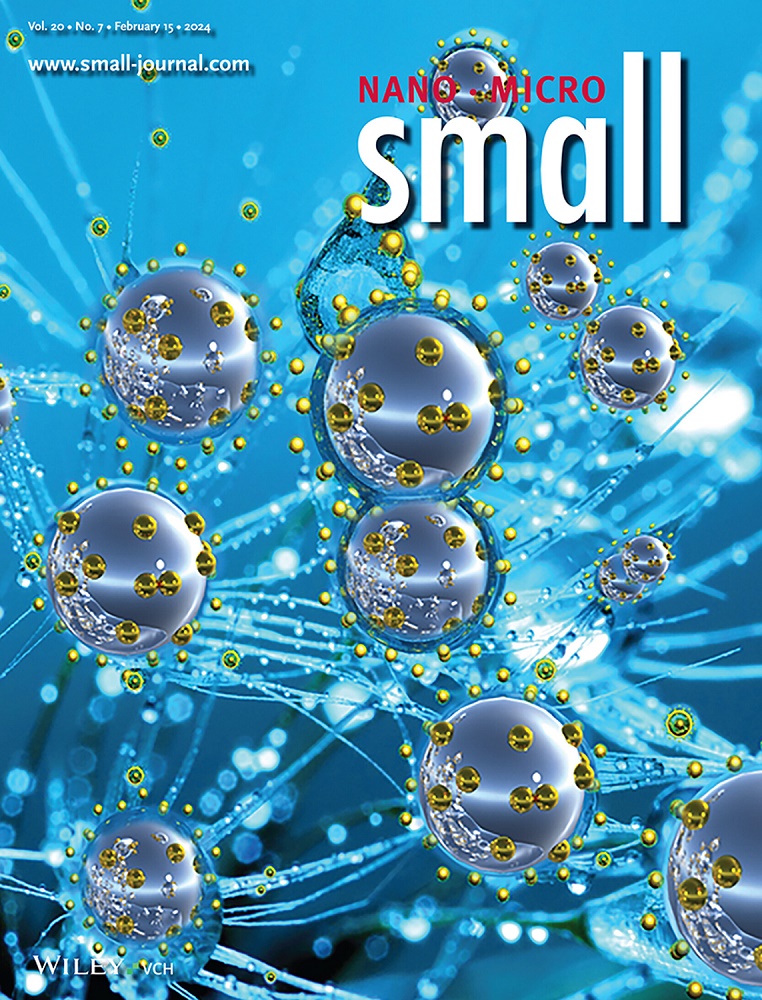A Dual‐Mode On‐Chip 3D‐Printed Nanoengineered Platform for Extraction and Electrochemical Detection of Enrofloxacin
IF 13
2区 材料科学
Q1 CHEMISTRY, MULTIDISCIPLINARY
引用次数: 0
Abstract
A magnetic molecularly imprinted polymer (MMIP) is synthesized for the development of a highly selective and sensitive electrochemical sensing platform targeting enrofloxacin (ENF). The micro‐sized mesoporous core‐shell MMIP structure is constructed with a magnetite core and an outer shell functionalized using 3‐aminopropyltriethoxysilane (APTES) as the monomer. The synthesis is optimized and validated using a range of physical and electrochemical techniques. The sensor is designed with dual‐mode functionality, integrating magnetic separation for efficient target extraction and electrochemical detection for precise quantification. A conventional electrode is modulated with multi‐layer nano‐functionalization to improve its analytical performance, while 3D‐printed components ensure miniaturization, fabrication precision, and scalability. The resulting device exhibits a broad linear detection range from 100 pM to 10 mM (10双模芯片上3D打印纳米工程平台提取和电化学检测恩诺沙星
合成了一种磁性分子印迹聚合物(MMIP),用于开发针对恩诺沙星(ENF)的高选择性和高灵敏度电化学传感平台。微尺寸介孔核壳mip结构由磁铁矿核和以3 -氨基丙基三乙氧基硅烷(APTES)为单体功能化的外壳构成。使用一系列物理和电化学技术对合成进行了优化和验证。该传感器设计具有双模功能,集成了磁分离,用于有效的目标提取和电化学检测,用于精确定量。传统电极采用多层纳米功能化调制,以提高其分析性能,而3D打印组件则确保小型化、制造精度和可扩展性。该器件具有100pm至10mm(10−10至10−2 M)的宽线性检测范围,超低检测限(LOD)为161 fM (1.61 × 10−13 M)。由于ENF经常被施用于牛,牛奶被用作真实样本来演示传感器的应用证明。实际样品分析表明,该方法回收率高(90.23% ~ 97.29%),基质干扰最小,在复杂的生物基质中具有较高的可靠性。该平台具有出色的可重复性和稳定性,为环境和食品安全监测提供了强大且可扩展的解决方案。
本文章由计算机程序翻译,如有差异,请以英文原文为准。
求助全文
约1分钟内获得全文
求助全文
来源期刊

Small
工程技术-材料科学:综合
CiteScore
17.70
自引率
3.80%
发文量
1830
审稿时长
2.1 months
期刊介绍:
Small serves as an exceptional platform for both experimental and theoretical studies in fundamental and applied interdisciplinary research at the nano- and microscale. The journal offers a compelling mix of peer-reviewed Research Articles, Reviews, Perspectives, and Comments.
With a remarkable 2022 Journal Impact Factor of 13.3 (Journal Citation Reports from Clarivate Analytics, 2023), Small remains among the top multidisciplinary journals, covering a wide range of topics at the interface of materials science, chemistry, physics, engineering, medicine, and biology.
Small's readership includes biochemists, biologists, biomedical scientists, chemists, engineers, information technologists, materials scientists, physicists, and theoreticians alike.
 求助内容:
求助内容: 应助结果提醒方式:
应助结果提醒方式:


